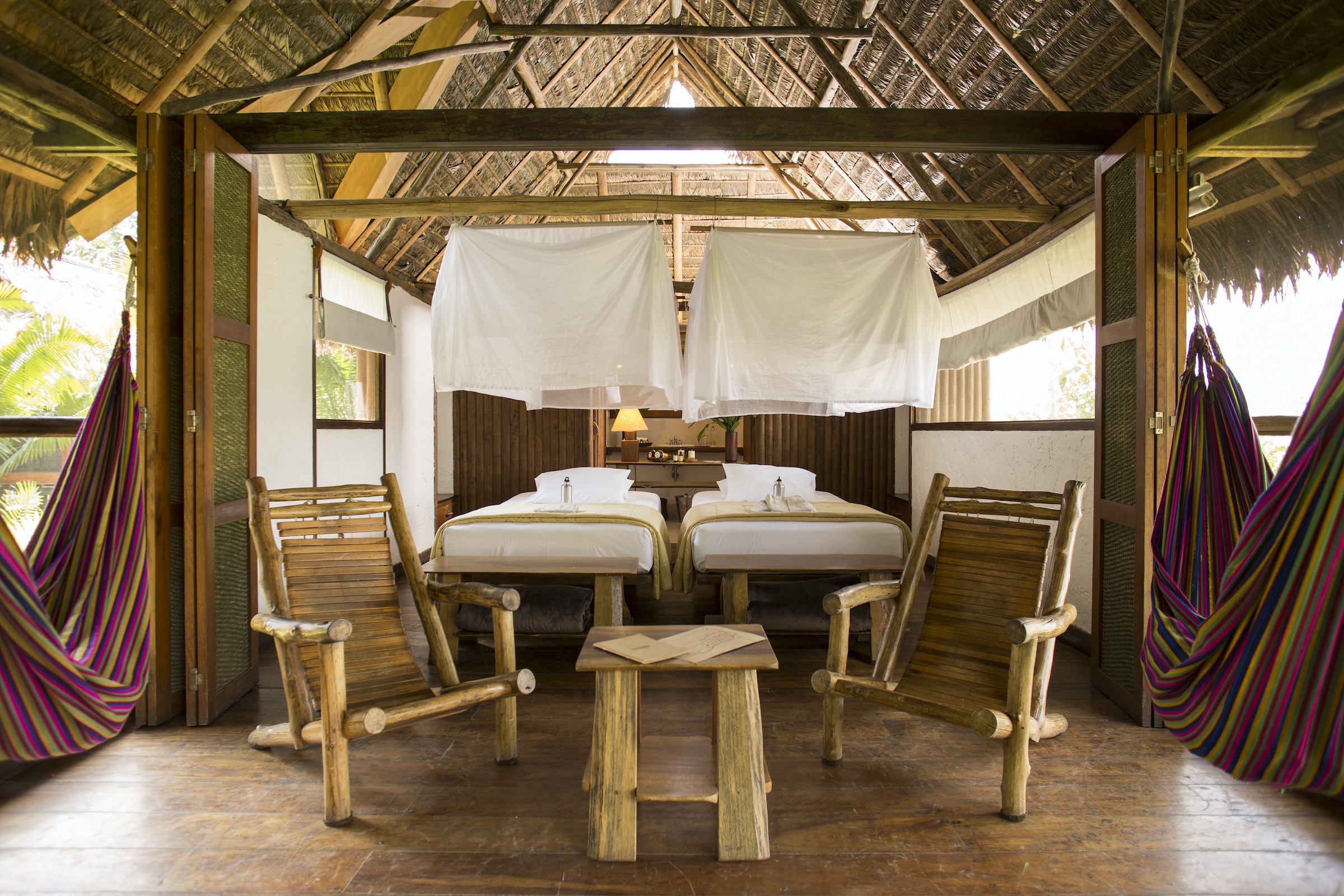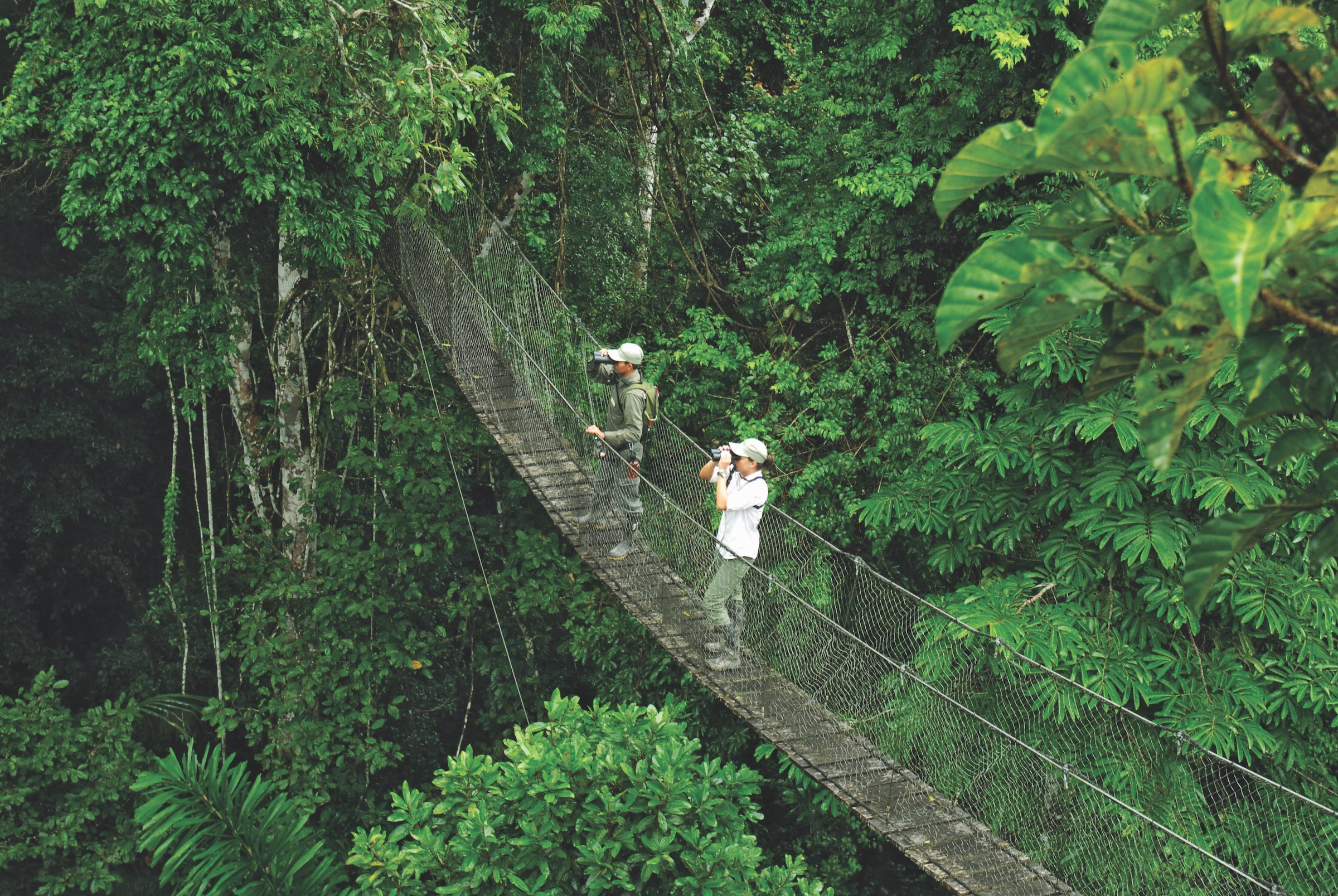Inkaterra Reserva Amazonica
Peruvian Amazon
Inkaterra Reserva Amazonica
Inkaterra Reserva Amazonica provides an eco-friendly yet luxurious accommodation in Peru’s incredible southern Amazon region. Located just across the river from the Tambopata National Reserve in its own ecological reserve, this lodge is the perfect base of exploration in this remote and exotic region.
Property Details
Each of the 35 rooms at the Inkaterra Reserva Amazonica is located in a private, thatch-roofed cabaña constructed in the traditional style of the Ese’eja tribe, using natural materials but incorporating modern amenities to ensure your comfort. There are two suite types in addition to the standard rooms. The Suite Amazonica features a screened siesta lounge with hammocks, chairs, and side tables, and the Suite Tambopata includes a private plunge pool and terrace and a hidden outdoor shower.
In the magical world of Reserva Amazonica, wellington boots are the accessories of choice and everyone smells of eau d’ DEET. Yet one is far from “roughing it” here. Each cabaña is remarkably well-sealed, meaning encounters with six-legged friends are scarce (a miracle considering the proliferation of insect life a mere 20 yards away). Even mosquitos avoid the clearing where the cabañas were built. Why risk the open air when the safety of the jungle is so close at hand?

Arriving at Inkaterra Reserva Amazonica
Only a one hour flight from Cusco’s high altitude chill, Puerto Maldonado feels like a different country. Airports in the tropics also have a distinct charm with their natural ventilation. What's more, color is everywhere in Puerto Maldonado. And the open-air transport perfectly brings you up close to the region's sunshine and breeze.
After checking in at the butterfly house, a Reserva Amazonica motor canoe awaits among the colorful local boats. Ferrying 45 minutes up river to access the property is genius - not that there’s any other option. Even the pinkest cheeks are cooled by the breeze, and it offers an exciting way to cruise away from transit and into adventure.
Lodge Experiences
The area offers a myriad of opportunities for excursions, whether they are full or partial day. In addition to hiking, wildlife experiences, and river excursions, you can also experience the rainforest by night, learn about butterflies in the Butterfly Garden, visit the Ese’eja people, or walk through the rainforest canopy on a system of bridges suspended over 100 feet above ground.
Meals at Inkaterra Reserva Amazonica are also fantastic and authentic. But the true luxury of Reserva Amazonica is the guides. These naturalists quickly endear themselves and accommodate the educational and recreational of each traveler with ease. They live on site and conduct research in the canopy, where the Inkaterra Canopy Walkway stretches from tree to tree with bouncy, swaying bridges like on childhood playgrounds, except that these are 90 feet in the air.

Additional Activities
Additional activities at Reserva Amazonica include exploring Gamitana Creek and meandering through a working fruit farm for a culinary tour. Starfruit sliced by machete, banana plucked from the tree, savoring one delight after another.
A canoe trip down the creek offers one time to lean back and survey the landscape as it glides by in shades of green and earth. To the left and right the guides identify the wildlife sharing the current. Turtles, fish, and birds watching for some lunch.
Or perhaps trek to Lake Sandoval to feed the piranhas.
Of course, it is also entirely possible to relax the entire afternoon on the porch hammocks, lulled to sleep by the din of raindrops from the midday rains. This is unadulterated nature, after all.
Book Inkaterra Reserva Amazonica
with Ker & Downey
Contact a Ker & Downey Travel Professional to personalize your journey, and read more about the seasonality and pricing in South America. For even more travel inspiration, follow us on Instagram, Facebook, and Twitter.
